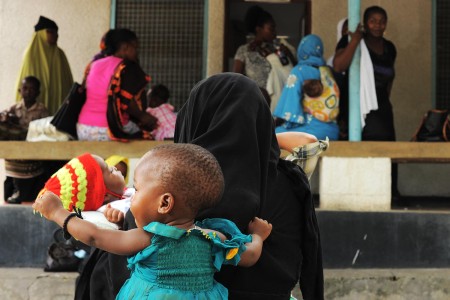
Every year, 1 million women have an unplanned pregnancy and Tanzania’s restrictive view on abortion is driving up maternal mortality rates, a new study says. Photo by Daniel Hayduk
Restrictive abortion laws are killing women, results from a new study say.
Every year, 405,000 women have abortions and ‘almost all’ of them are done unsafely in secret and are a ‘major driver’ in maternal mortality, says the Guttmacher Institute.
Forty percent of women who have an undercover abortion require medical attention — however the majority can’t access it.
Those with financial means might be able to pay for care, but students or poor women who undergo an undercover abortions are often even more vulnerable, says Sima Bateyunga of the Tanzania Women Lawyers Association (TAWLA.)
“Abortion is illegal in Tanzania and a lot of women are dying because of that,” says Bateyunga.
Despite ratifying the 2007 African Charter’s Protocol on the Rights of Women in Africa, abortions are punishable with up to 14 years in prison unless performed to save the woman’s life.
 Bateyunga says that while laws can change, cultural and religious leaders need to talk about the root causes of unwanted pregnancies and not just focus on the act of abortion.
Bateyunga says that while laws can change, cultural and religious leaders need to talk about the root causes of unwanted pregnancies and not just focus on the act of abortion.
“[The law] remains unclear on its legality to preserve the woman’s physical or mental health,” says the study, gathered in conjunction with the Muhimbili University of Health and Allied Sciences and the National Institute of Medical Research.
Earlier this year, Prime Minister Kassim Majaliwa told doctors that he doesn’t ‘want to hear labour rooms are being used for terminating pregnancies’ and warned medical staff secretly performing abortions to expect to be fired or imprisoned.
